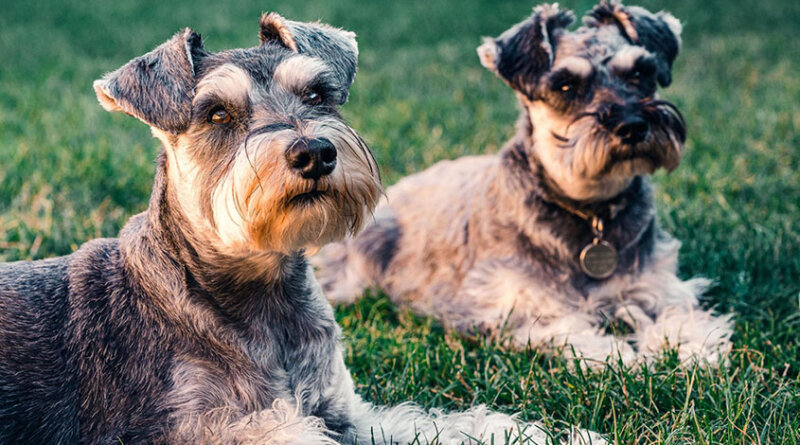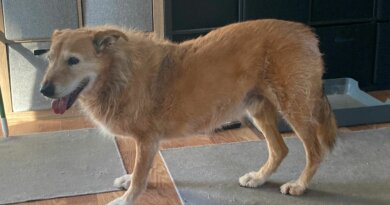Hot Spots On Dogs: Causes And Treatment
Hot spots are an irritating skin condition that affects countless dogs every year. Without proper care, hot spots will continue to grow, causing increased pain levels and itchiness for dogs. Fortunately, with both time and care, hot spots on dogs can be treated for and prevented.
Dr. Henry Cerny, DVM, MS of Yankee Hill Veterinary Hospital, answers some common questions about hot spots on dogs and how to treat these painful sores.
What are Hot Spots?

A hotspot (also known as Pyotraumatic dermatitis or acute moist dermatitis) is a condition that involves an area of skin that has become inflamed and infected. The affected skin often appears as a moist, oozing, reddened area that is painful and very itchy to the dog. Dogs with hot spots may also suffer from hair loss in the infected area.
Unlike insect bites, hot spots on dogs continue to spread over time. Hot spots on dogs can appear suddenly, often developing into large inflamed sores in only a few hours. Dogs that constantly chew and lick at the area may worsen the condition dramatically, as itching the skin can cause the hot spot to spread. Because hot spots do not get better on their own, it’s important to begin treatment as soon as you notice signs of hot spots on your dog’s skin.
Where Canine Hot Spots Occur
Common places for hot spots to occur on dogs include the head, legs, and hips. While hot spots can affect any dog, they are especially common in long-hair dog breeds, and they can result in skin or ear infections.
Additionally, hot and humid weather may cause hot spots to occur, as will excess moisture in the coat caused by swimming or bathing. Because hot spots commonly occur in the summer, these patches of infected skin are often referred to as “summer sores” in dogs.
What Causes Hot Spots On Dogs?

There are a number of reasons hot spots appear on dogs. Most often, anything that causes itchiness of the skin can lead to the development of hot spots on dogs. Some common triggers include:
- Atopy (allergies to things in the environment such as grasses, trees, weeds, and dust mites)
- Food allergies
- Fleas and mites
- Insect bites
- Skin wounds
As the dog licks and chews the area, a bacterial infection of the skin (typically caused by staph) develops by taking advantage of the damaged, inflamed skin. The infection is often deep in the dog’s skin, causing pain and itchiness for the dog. In addition to the moist, oozing appearance of the hot spot, an odor may be present.
Certain causes for hot spots on dogs are chronic issues and thus result in recurring hot spots. Because your dog’s health condition impacts the frequency of hot spots recurring, it’s important to identify and address any underlying causes of your dog’s hot spots.
Best Practices for Preventing Hot Spots in Dogs

Anyone who’s had poison ivy or a stubborn bug bite knows just how uncomfortable itchy, irritated skin can be. Help your dog prevent ear infections and hot spots that make him miserable with these simple practices:
Routine Grooming
The first step to preventing hot spots on dogs is properly caring for your dog’s skin. Because hot spots are a skin condition, regular grooming and bathing can decrease the chance of hot spots appearing on your dog.
Long-haired dog breeds may also benefit from hair clippings during the summer months, as long coats create a breeding ground for bacteria when moisture gets trapped inside the dense hair.
Thorough Drying
If your dog swims or bathes often, it’s important to dry your dog to prevent hot spots from occurring. Dogs who spend time in the water are at greater risk of developing hot spots, as a dog’s coat will trap moisture and consequently cause hot spots to appear.
Sufficient Exercise
Giving your dogs adequate exercise is another way to prevent hot spots on dogs and help your canine friend thrive. Because many dogs tend to lick and scratch themselves when they are bored, exercise can keep them mentally and physically stimulated, preventing your pup from itching areas that are inflamed by allergies or parasites.
Proactive Diet
Certain diets can also aid in preventing Pyotraumatic dermatitis in dogs. Supplementing fatty acids (Omega-3s) can help support your dog’s health; DHA and EPA, found in fish oil, are two of the many supplements that not only provide anti-inflammatory properties to fight skin irritations but also encourage a healthy skin barrier to prevent recurrence of hot spots.
You may also try switching your dog’s diet if your dog is having allergic reactions to his food.
Dog Hot Spot Treatment: Treating Hot Spots and Other Skin Infections

Once you have identified hot spots on your dog, the next step is to successfully treat the skin infections. The goal of hot spot treatment is to clear the bacterial infection, relieve the itching and pain, and remove the underlying triggers, if possible.
The healing process may look different for each pet depending on the underlying cause as well as the number and intensity of hot spots. In some cases, veterinary treatment will be necessary, especially if your dog is suffering from any secondary bacterial infections.
Ultimately, your vet will be able to recommend the best treatment for dog hot spots, but there are a number of treatments you can use at home to help relieve the symptoms and soothe the affected area.
Home Remedies to Relieve Symptoms
The matted fur in and around the dog’s hot spot is usually clipped to allow initial cleaning of the open wound and the application of topical medications. Common topical treatments used on pets include antibiotic cream, topical spray, or medicated ointment to kill bacteria and help reduce inflammation. Allergy medication may also be used to help with itchiness.
Veterinary Treatment for Acute Moist Dermatitis
Although it is possible to treat hot spots with home remedies, it is best to allow your vet to provide treatment for your pup. While you’re waiting for an appointment, however, you may gently wash the area with cool water and a mild soap. Remember that hot spots on dogs can be extremely painful, so be gentle when cleansing the area.
The treatment your vet recommends may vary depending on your dog’s condition. They may prescribe pain medications or antibacterial shampoo to help make your pet more comfortable and keep the affected area clean.
In many cases, your vet will prescribe oral antibiotics for a course of three to four weeks. In some cases, they may prescribe them for a longer period of time. Often, your vet will provide a short course of corticosteroids (i.e. prednisone) to relieve the itching and pain due to inflammation.
When treating atopic dermatitis, it’s important that your dog doesn’t excessively lick or chew the inflamed area. Constant licking and itching will not only cause the sores to open up, but may also cause hot spots to recur. Keeping your dog well exercised and stimulated during the following weeks after treatment allows hot spots on dogs to heal properly, as well as prevent recurrence of hot spots in the future.
Taking Care of Your Dog’s Hot Spot Early
While hot spots are a nightmare for most dog owners, they can easily be cured and prevented through proper care and treatment. If you think your dog may have hot spots on his skin, it is best to consult your veterinarian to begin treatment right away. The sooner you get a professional opinion and start treatment, the better your dog will feel!




